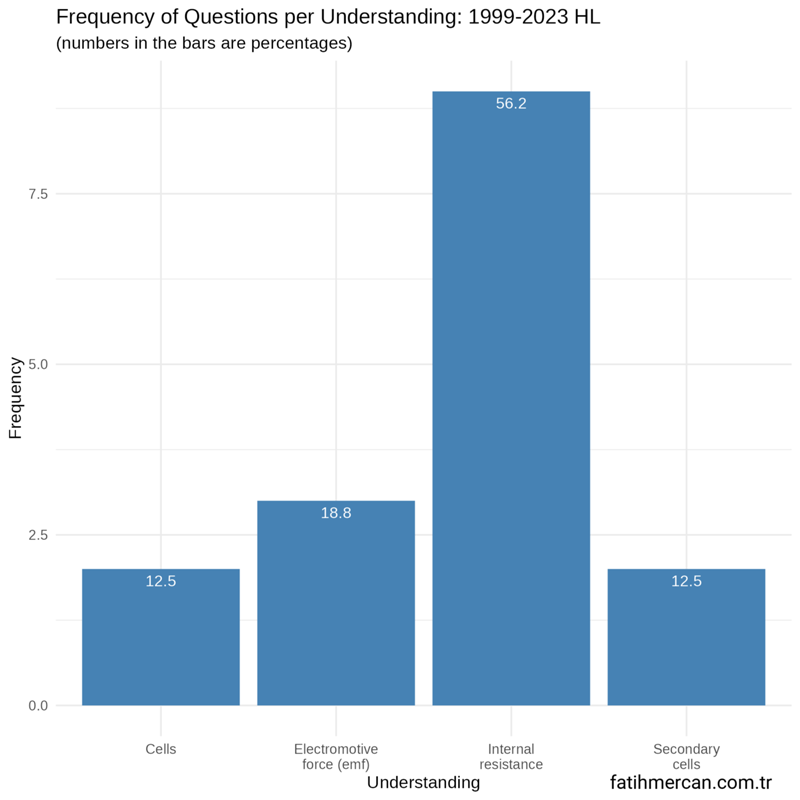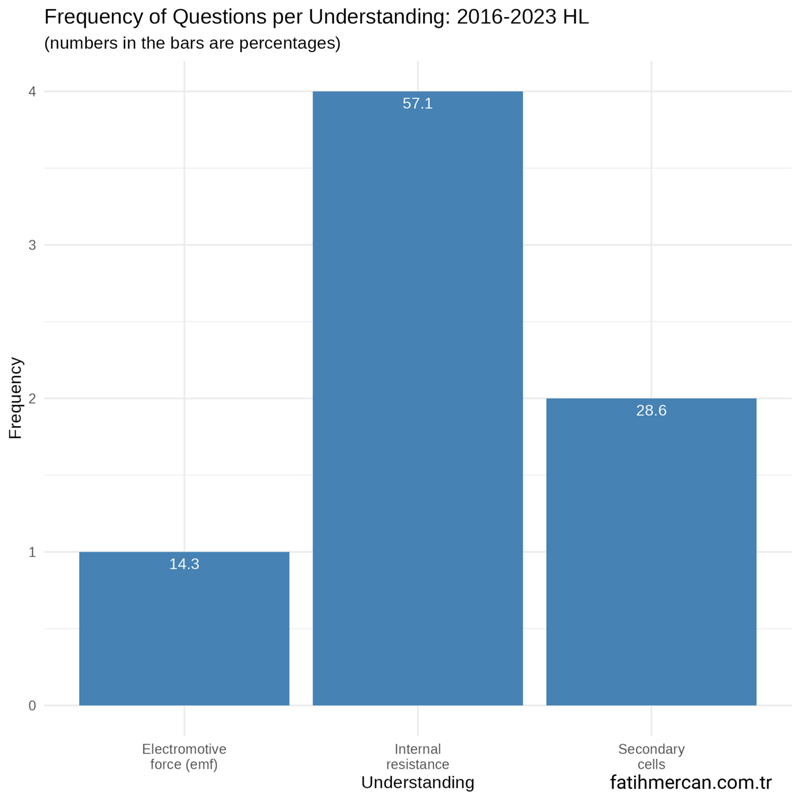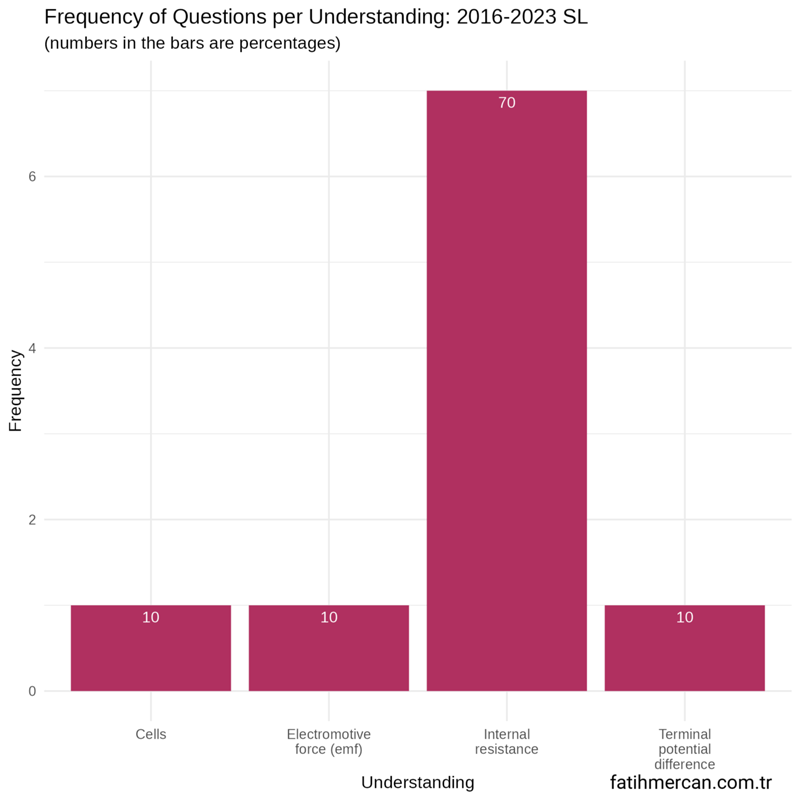In IB Physics First Assessment 2016, electric cells is a subtopic of Topic 5, electricity and magnetism. This subtopic has the following understandings associated with it.
- Cells
- Internal resistance
- Secondary cells
- Terminal potential difference
- Electromotive force (emf)
In this part of the analysis, I am particularly interested in “What is the frequency distribution of the questions concerning electric cells understandings?”
Frequency distribution of questions by electric cells understandings for HL
Between 1999-2023
For the entire dataset for HL, more than half of the questions in Paper 1 came from internal resistance. The terminal potential difference was not assessed at all.

Figure 1
Between 2016-2023
Between these years, internal resistance was again heavily emphasized. Terminal potential difference and cells were not assessed at all. Secondary cells became relatively more important.

Figure 2
Frequency distribution of questions by electric cells understandings for SL
Between 1999-2023
For the entire SL dataset, secondary cells were not assessed at all. Internal resistance was disproportionately emphasized.

Figure 3
Between 2016-2023
Between these years, the distribution is similar to the entire dataset. Only the emphasis on terminal potential difference is increased.

Figure 4
Where to go from here?
You may want to check out the other related subtopics:
- Electric fields
- Heating effect of electric currents
- Electric cells
- Magnetic effects of electric currents
If you are interested in more detailed analyses of the topics:
- Measurement and uncertainties
- Mechanics
- Thermal physics
- Waves
- Electricity and magnetism
- Circular motion and gravitation
- Atomic, nuclear and particle physics
- Energy production
- Wave phenomena
- Fields
- Electromagnetic induction
- Quantum and nuclear physics
This work/product/service has been developed independently from and is not endorsed by the International Baccalaureate Organization. International Baccalaureate, Baccalauréat International, Bachillerato Internacional and IB are registered trademarks owned by the International Baccalaureate Organization.
